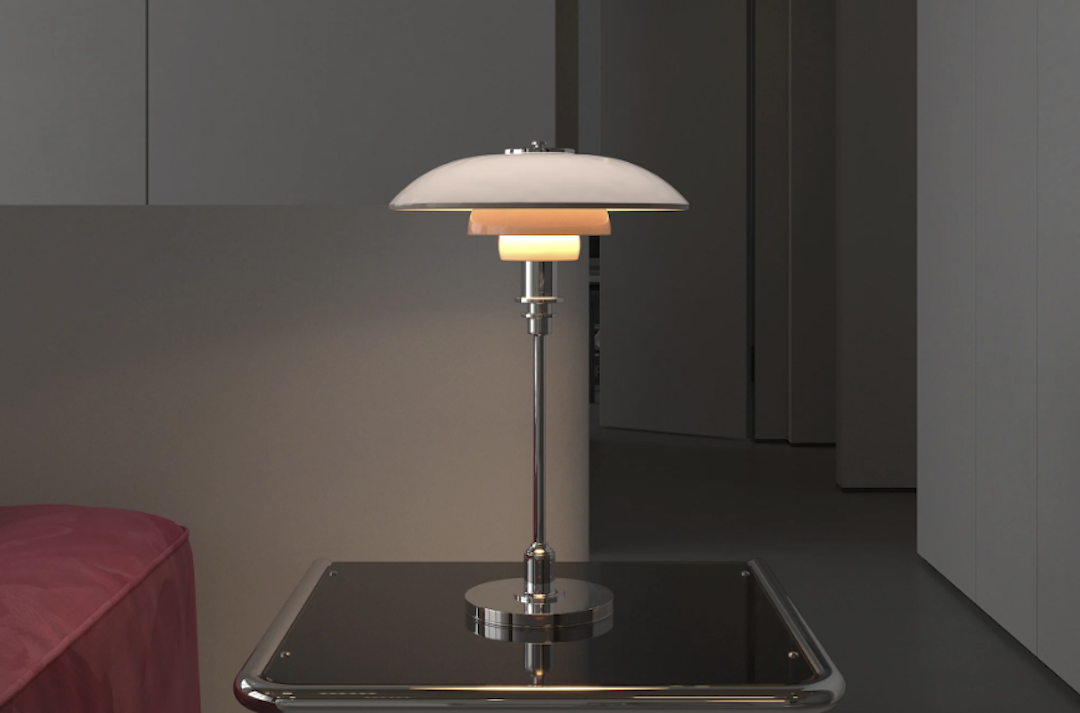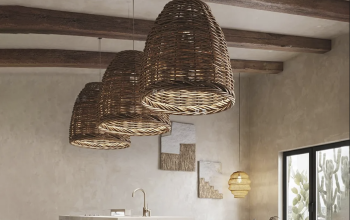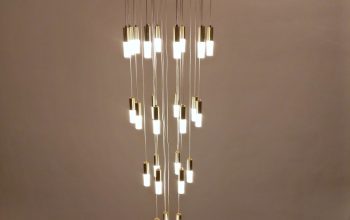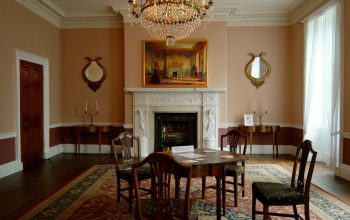Selecting the appropriate style for lighting fixtures is a crucial step in interior design, as it sets the tone for the entire space. The style of a light fixture can either complement or clash with existing decor, making it essential to consider the overall aesthetic of the room. For instance, a modern minimalist space may benefit from sleek, geometric fixtures that emphasize clean lines and simplicity.
In contrast, a traditional setting might call for ornate chandeliers or vintage sconces that evoke a sense of history and craftsmanship. Understanding the various design movements—such as industrial, bohemian, or mid-century modern—can help homeowners make informed decisions that enhance their living environment. Moreover, the choice of style extends beyond mere aesthetics; it also reflects personal taste and lifestyle.
A family with young children may prefer durable, easy-to-clean fixtures that can withstand the rigors of daily life, while a couple who enjoys entertaining might opt for statement pieces that serve as conversation starters. Additionally, the style should harmonize with the function of the space. For example, a cozy reading nook may benefit from warm-toned lamps with soft shades, while a home office could require bright, focused lighting to enhance productivity.
By carefully considering both style and function, individuals can create a cohesive and inviting atmosphere.
Size and Scale
Considering Room Dimensions and Ceiling Height
To determine the right size of lighting fixtures Mosundesign, it’s essential to consider the dimensions of the room and the height of the ceilings. For example, a grand foyer with high ceilings can accommodate a large chandelier, creating a dramatic focal point that draws the eye upward and emphasizes the vertical space. In contrast, compact apartments require wall-mounted sconces or pendant lights with a smaller profile to provide necessary lighting without overwhelming the area.
Visual Weight and Design Elements
The design elements of a light fixture, such as color, shape, and material, contribute to its perceived scale. A delicate glass pendant may appear lighter and more airy than a heavy wrought-iron fixture, even if they are similar in size. Therefore, it’s crucial to assess how these elements interact with other furnishings and decor when selecting lighting for a room.
Creating Harmony through Proportion
A well-proportioned lighting scheme not only enhances functionality but also contributes to the overall harmony of the space. By selecting fixtures that are in proportion to the room and its furnishings, you can create a balanced and inviting atmosphere that enhances the overall aesthetic of the space.
Material and Finish
The choice of material and finish for lighting fixtures plays a significant role in defining their character and durability. Common materials include metal, glass, wood, and fabric, each offering unique aesthetic qualities and practical benefits. For example, metal fixtures often convey a sense of modernity and strength, while glass can introduce elegance and transparency into a design scheme.
Wood fixtures may evoke warmth and organic beauty, making them ideal for rustic or natural-themed interiors. The finish—whether matte, polished, or brushed—further influences how light interacts with the fixture and its surroundings. In addition to aesthetics, the material selection should also consider maintenance and longevity.
Fixtures made from high-quality materials are likely to withstand wear and tear over time. For instance, stainless steel or brass finishes are not only visually appealing but also resistant to tarnishing and corrosion, making them suitable for kitchens or bathrooms where moisture is prevalent. On the other hand, painted finishes may require more upkeep to maintain their appearance.
Understanding the implications of different materials can help homeowners choose fixtures that not only look good but also stand the test of time.
Functionality and Features
When selecting lighting fixtures, functionality should be at the forefront of decision-making. Different spaces have varying lighting needs based on their intended use. For example, task lighting is essential in areas where specific activities take place—such as reading or cooking—requiring focused illumination that minimizes shadows.
In contrast, ambient lighting creates an overall glow that enhances comfort and mood in living areas or bedrooms. Many modern fixtures now come equipped with adjustable features such as dimmers or smart technology that allows users to customize brightness levels according to their preferences. Additionally, energy efficiency has become an increasingly important consideration in lighting design.
With advancements in technology, many fixtures now incorporate LED bulbs that consume less energy while providing ample brightness. Some fixtures even offer integrated smart features that allow users to control lighting remotely via smartphone apps or voice commands. This not only enhances convenience but also contributes to sustainability efforts by reducing energy consumption.
By prioritizing functionality alongside aesthetics, homeowners can create spaces that are both beautiful and practical.
Bulb Type and Brightness
The type of bulb used in lighting fixtures significantly impacts both the quality of light produced and energy efficiency. Traditional incandescent bulbs have long been favored for their warm glow; however, they are being phased out in favor of more energy-efficient options such as compact fluorescent lamps (CFLs) and light-emitting diodes (LEDs). LEDs are particularly popular due to their longevity and low energy consumption while offering a range of color temperatures—from warm white to cool daylight—that can influence the ambiance of a room.
Brightness is another critical factor when selecting bulbs. Measured in lumens rather than watts, lumens indicate how much light is emitted by a bulb. For instance, a standard 60-watt incandescent bulb produces approximately 800 lumens; therefore, when replacing it with an LED bulb, one should look for an equivalent lumen output rather than focusing solely on wattage.
Additionally, different areas within a home may require varying levels of brightness; for example, bright task lighting is essential in kitchens or workspaces, while softer lighting may be more appropriate for bedrooms or dining areas. Understanding these nuances allows homeowners to create well-lit environments tailored to their specific needs.
Placement and Arrangement
Optimizing Overhead Lighting
Overhead fixtures such as chandeliers or pendant lights should be hung at appropriate heights to provide adequate illumination without obstructing sightlines or creating hazards. In dining areas, pendants are typically suspended 30-36 inches above the table to create an inviting atmosphere while allowing for unobstructed views across the table.
Layering Light Sources for Depth and Dimension
Layering light sources is another essential aspect of placement. Combining ambient lighting with task and accent lighting creates depth and dimension within a room. For example, wall sconces can be used to highlight artwork or architectural features while table lamps provide localized illumination for reading or working.
Flexibility and Ambiance through Dimming and Arrangement
Using dimmers allows for flexibility in adjusting light levels based on different activities or moods throughout the day. Thoughtful arrangement not only enhances functionality but also contributes to an inviting ambiance that encourages relaxation and social interaction.
Cord and Switch Options
The choice of cord and switch options for lighting fixtures can significantly influence both usability and aesthetics. Traditional hardwired fixtures require professional installation but offer a clean look without visible cords cluttering the space. However, plug-in options have gained popularity due to their versatility; they can be easily moved or replaced without extensive electrical work.
This flexibility is particularly beneficial in rental properties where permanent modifications may not be allowed. Switch options also play a crucial role in user experience. Standard toggle switches are common but may lack convenience in larger spaces where reaching them can be cumbersome.
Alternatives such as dimmer switches allow users to adjust brightness levels according to their needs while enhancing energy efficiency. Smart switches enable remote control via smartphones or voice commands, providing added convenience for those who want to manage their lighting from anywhere in the home. By carefully considering cord and switch options, homeowners can enhance both functionality and visual appeal in their lighting designs.
Budget and Value
When embarking on a lighting project, establishing a budget is essential to ensure that choices align with financial constraints while still achieving desired outcomes. Lighting fixtures come in a wide range of price points; therefore, it is important to balance quality with affordability. Investing in high-quality fixtures may incur higher upfront costs but can lead to long-term savings through durability and energy efficiency.
Value extends beyond mere cost; it encompasses how well a fixture meets functional needs while enhancing the overall aesthetic of a space. For instance, selecting versatile fixtures that can adapt to different settings or styles over time can provide greater value than cheaper alternatives that may need frequent replacement. Additionally, considering factors such as warranty coverage and customer service can further enhance perceived value when making purchasing decisions.
By thoughtfully evaluating budgetary constraints alongside quality considerations, homeowners can create beautiful spaces without compromising on functionality or style.



